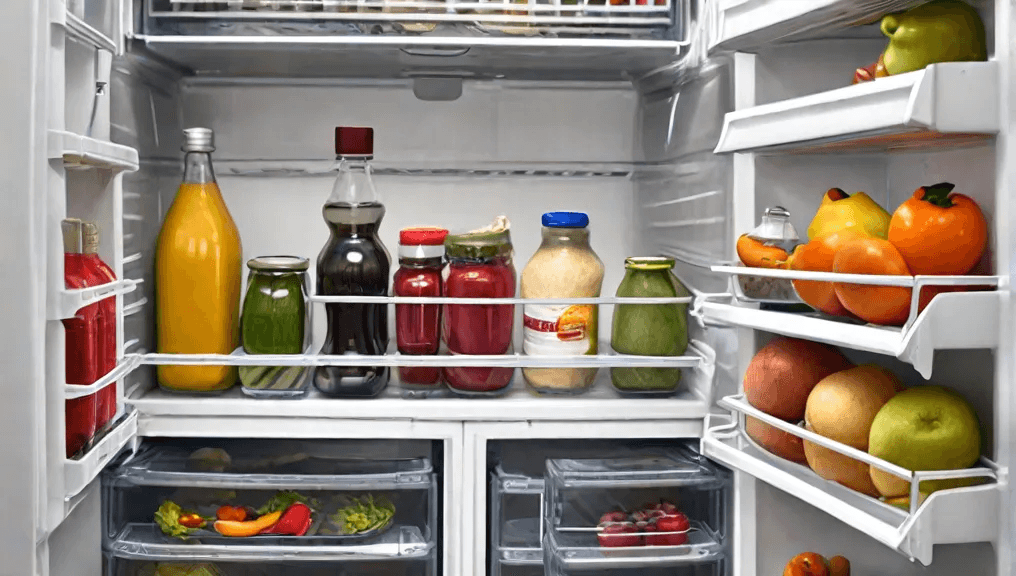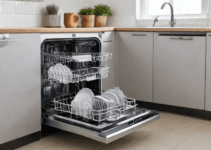Refrigerators are indispensable appliances
Refrigerators are indispensable appliances in modern households, playing a crucial role in preserving food and ensuring it remains fresh for consumption. Proper refrigerator usage is vital as it not only prolongs the shelf life of groceries but also helps in maintaining food safety. However, despite their importance, many people unknowingly engage in practices that undermine their refrigerator’s efficiency and effectiveness. These common mistakes can lead to unintended consequences such as food spoilage, waste, and even potential health risks due to the growth of harmful bacteria.

Understanding and avoiding these errors can significantly enhance the performance of your refrigerator and ensure that the food stored within remains safe and nutritious. It is essential to recognize that simple missteps, such as improper temperature settings, overloading the unit, or neglecting regular cleaning, can have far-reaching impacts. By being mindful of how we use our refrigerators, we can not only save money by reducing food waste but also protect our health by preventing foodborne illnesses.
Please, read our post and do not forget to check our YouTube channel “Grig Stamate”:
https://www.youtube.com/@GrigStamate
You will find there thousands of designing, furnishing, and decorating ideas for your home interior and outdoors.
Allow me to mention one of them:
Beautiful Modern Kitchens | Interior Design Ideas #15 (video)
In the following sections, we will delve into seven common mistakes people make with their refrigerators. By shedding light on these issues, we aim to provide practical insights and tips to help you optimize your refrigerator’s functionality. Whether it’s understanding the right temperature range, organizing the contents efficiently, or maintaining cleanliness, these guidelines will assist you in making the most of this essential kitchen appliance. Let’s explore these mistakes in detail and learn how to avoid them for better food preservation and safety.
One common mistake many people make is storing tomatoes in the refrigerator. While it may seem like a good idea to keep them fresh, the cold temperature can significantly impact the texture and flavor of tomatoes. When tomatoes are exposed to cold, their cell structure begins to break down, resulting in a mealy and less appealing texture. This alteration not only affects the mouthfeel but also diminishes the natural richness of their flavor, making them far less tasty.
Tomatoes thrive best at room temperature, where they can continue to ripen and develop their full, robust flavor. Refrigeration halts this ripening process and can even cause tomatoes to lose some of their aromatic compounds, further diminishing their taste. Therefore, it’s recommended to store tomatoes in a cool, dry place away from direct sunlight until they reach their peak ripeness.
Once they are ripe, it’s best to consume tomatoes promptly for the best taste experience. If you must store ripe tomatoes for a short period, place them in a bowl on your kitchen counter or in a pantry. If you find yourself with an excess of ripe tomatoes, consider cooking them into sauces or soups, which can be stored in the refrigerator or freezer without compromising their quality.
By understanding how cold temperatures affect tomatoes, you can avoid this common mistake and ensure that your tomatoes remain flavorful and enjoyable. Proper storage not only enhances their taste but also extends their usability in various culinary applications.
One of the common mistakes many people make with their refrigerator organization is placing minced meat on the top shelf. This practice can lead to significant health risks, primarily due to the potential for cross-contamination. Minced meat, like any raw meat, can release juices that carry harmful bacteria. When stored on the top shelf, these juices can drip down onto other foods, including ready-to-eat items, leading to a higher chance of foodborne illnesses.
To mitigate this risk, it’s crucial to store raw minced meat on the lower shelves of your refrigerator. This placement ensures that any potential drips are contained and do not contaminate other foods. The lower shelves are typically the coldest part of the refrigerator, which helps in maintaining the optimal temperature for storing raw meats. Ideally, minced meat should be kept at a temperature of 40°F (4°C) or lower to prevent bacterial growth.
In addition to proper placement, minced meat should be stored in a sealed container or a tightly wrapped package. This step further minimizes the risk of contamination and helps in maintaining the freshness of the meat. Containers with tight-fitting lids or using plastic wrap and aluminum foil can be effective methods for sealing minced meat.
Adhering to these storage practices not only safeguards against health hazards but also enhances the overall efficiency of your refrigerator. Proper organization ensures that cold air circulates efficiently, maintaining consistent temperatures throughout the appliance. By following these guidelines, you can significantly reduce the risk of cross-contamination and ensure that your minced meat stays fresh and safe for consumption.
Conclusion: Improve Your Refrigerator Habits
In our exploration of common refrigerator mistakes, we’ve highlighted several key areas where improvements can be made to ensure optimal food quality and safety. By addressing issues such as improper temperature settings, neglecting to clean the refrigerator regularly, overloading shelves, and storing food inappropriately, you can significantly enhance the efficiency and functionality of your refrigerator. These adjustments not only help in preventing food spoilage but also contribute to better energy consumption and prolonged appliance life.
Correcting these refrigerator mistakes is crucial for maintaining the freshness and nutritional value of your food. Simple changes, like organizing food items to allow proper air circulation, promptly discarding expired products, and understanding the specific storage needs of different food types, can make a substantial difference in your kitchen’s overall effectiveness. Additionally, regular maintenance and timely repairs play an essential role in ensuring your refrigerator operates at its best.
We encourage you to implement the tips provided to enhance your refrigerator usage. By being mindful of these common pitfalls and actively working to avoid them, you can create a more efficient and reliable food storage environment. This, in turn, will help reduce food waste, save money, and promote a healthier lifestyle.
We invite you to share your own refrigerator tips or ask any questions you may have in the comments section below. Engaging with a community of readers who are also striving to improve their refrigerator habits can provide valuable insights and support. Together, we can all work towards creating better, more sustainable kitchen practices. Thank you for joining us on this journey to a more efficient and effective refrigerator usage.
Other related posts from our website:
https://howtobuildahouseblog.com/how-to-interpret-a-refrigerator-buzzing-sound/
https://howtobuildahouseblog.com/smart-consumers-smart-refrigerators/
Thank you so much for your attention.
Stay tuned. We will upload many other amazing posts to our website and videos onto our YouTube channel.
Thank you so much.
for your time and attention.
Best Regards
See you to another post,
Bye, Bye


